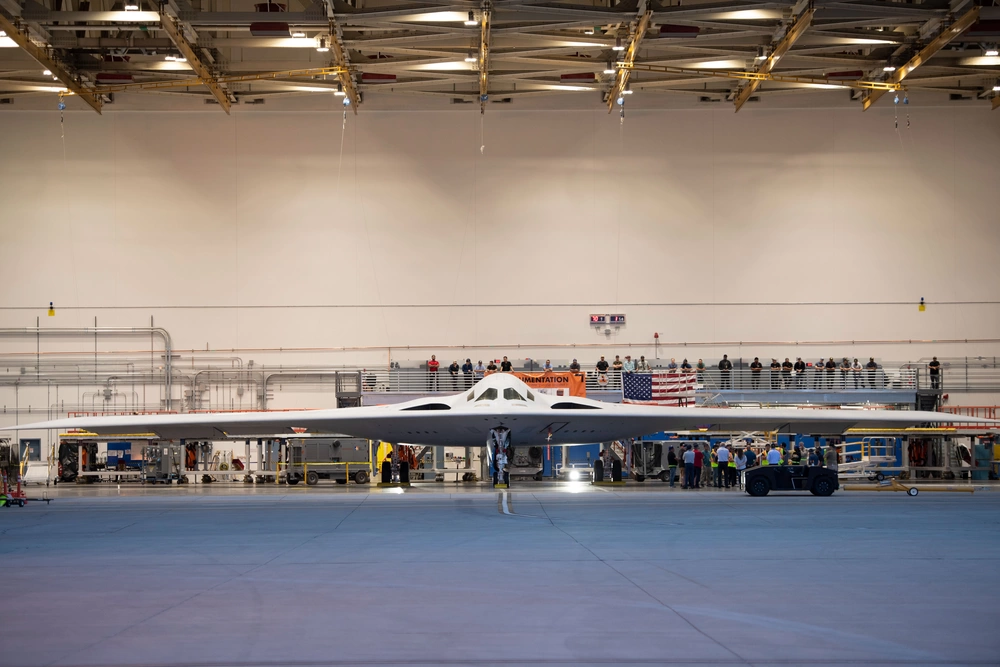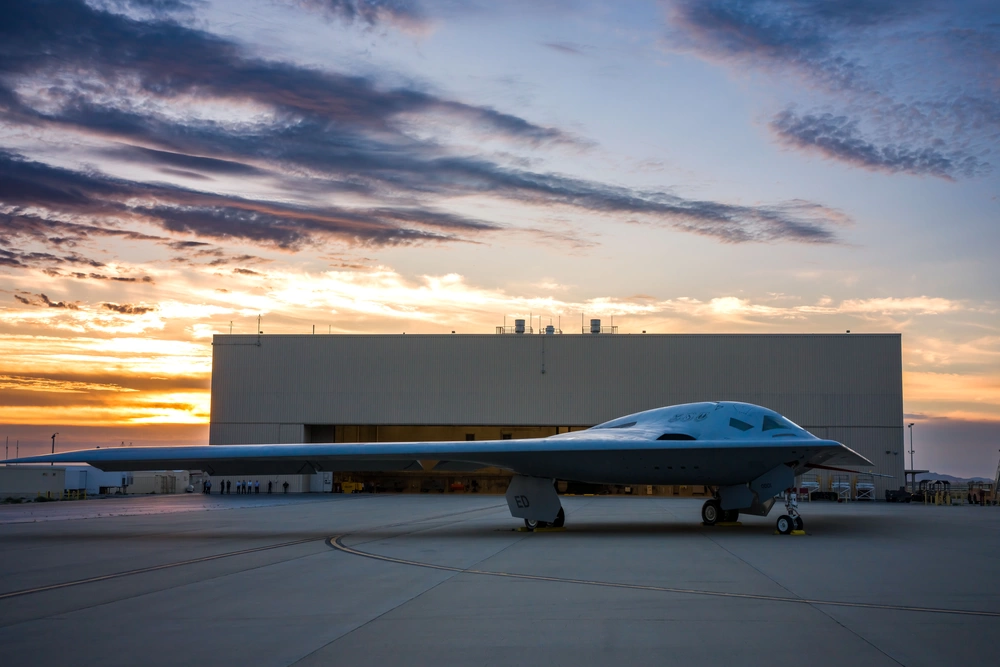Progress Continues on the Northrop Grumman B-21 Raider: This month, the Northrop Grumman B-21 Raider reached a new milestone in its development, as the defense contractor announced the program had commenced engine runs as part of its ground test program at the company’s Palmdale, California, facility.
“Engine testing is an essential milestone for the program as the world’s first sixth-generation aircraft continues on the path to flight test,” Northrop Grumman said via a statement on Thursday.
The B-21’s first flight, which is currently scheduled to occur later this year, will remain a data-driven event that is monitored by Northrop Grumman and the United States Air Force.
The announcement that the engine tests have commenced came just days after the Air Force also released a number of new images of the secretive stealth nuclear bomber, including a number shown from never-before-seen angles. The images were taken to coincide with Air Force Chief of Staff Gen. Charles Q. Brown Jr.’s keynote address at the Air, Space & Cyber Conference. In one of the photos, the B-21 can be seen outside of its Palmdale hanger.
Brown described the B-21 as “a perfect example of successful design implementation, of operators and acquisition professionals working together to deliver capability to the warfighter. Just as importantly, developing the maintenance processes to ensure aircraft availability.”
New Details Emerge on B-21 Raider
As Air and Space Forces magazine reported, the new images revealed an air data probe mounted on the front of the aircraft below the nose, a test item that will not be a feature of operational aircraft – however, as the probe is angled downwards, it may suggest that the aircraft could fly with a slight pitch-up attitude.
In addition, the images revealed how narrow the air intakes on the B-21 are compared to the B-2 Spirit, while the new stealth bomber has simpler landing gear doors and its flight control surfaces are larger than those of the former aircraft.
First Flight Coming Soon?
It was in July that Northrop Grumman announced that the bomber had accomplished its first “power on” test, a critical first step that inched the aircraft closer to its first flight. Developed with the next generation of stealth technology, advanced networking capabilities, and open systems architecture, the B-21 will serve as the backbone of America’s bomber fleet.
“The bomber was designed up front for supportability and maintainability-based upon decades of lessons learned and best practices from prior aircraft programs-to improve long-term affordability and outcomes in operations and sustainment. The B-21 first flight is anticipated to take place in calendar year 2023,” the Air Force announced.
The B-21 Raider was publicly rolled out last December and is on track to enter service by the end of the decade – replacing the aging B-1 Lancer and B-2 Spirit while operating with the B-52 Stratofortress until it eventually becomes the sole American long-range strategic bomber. The United States is one of just three countries – along with Russia and China – that continue to operate such bombers.


The B-21 Raider is designed with an open systems architecture, enabling rapid insertion of mature technologies and allowing the aircraft to be effective as threats evolve. The bomber was designed up front for supportability and maintainability-based upon decades of lessons learned and best practices from prior aircraft programs-to improve long-term affordability and outcomes in operations and sustainment. The B-21 first flight is anticipated to take place in calendar year 2023. (U.S. Air Force photo)
Author Experience and Expertise
A Senior Editor for 19FortyFive, Peter Suciu is a Michigan-based writer. He has contributed to more than four dozen magazines, newspapers, and websites with over 3,200 published pieces over a twenty-year career in journalism. He regularly writes about military hardware, firearms history, cybersecurity, politics, and international affairs. Peter is also a Contributing Writer for Forbes and Clearance Jobs. You can follow him on Twitter: @PeterSuciu.

